Key takeaways
- Effective communication in photography relies on non-verbal cues and building trust with subjects to capture authentic moments.
- Preparation for a photo session involves understanding the subject’s comfort and interests, which fosters a natural flow during the shoot.
- Techniques like mirroring body language and using gentle verbal prompts help create a relaxed atmosphere, encouraging genuine expressions.
- Managing challenging situations requires patience and adaptability, allowing space for subjects to feel comfortable and open up emotionally.
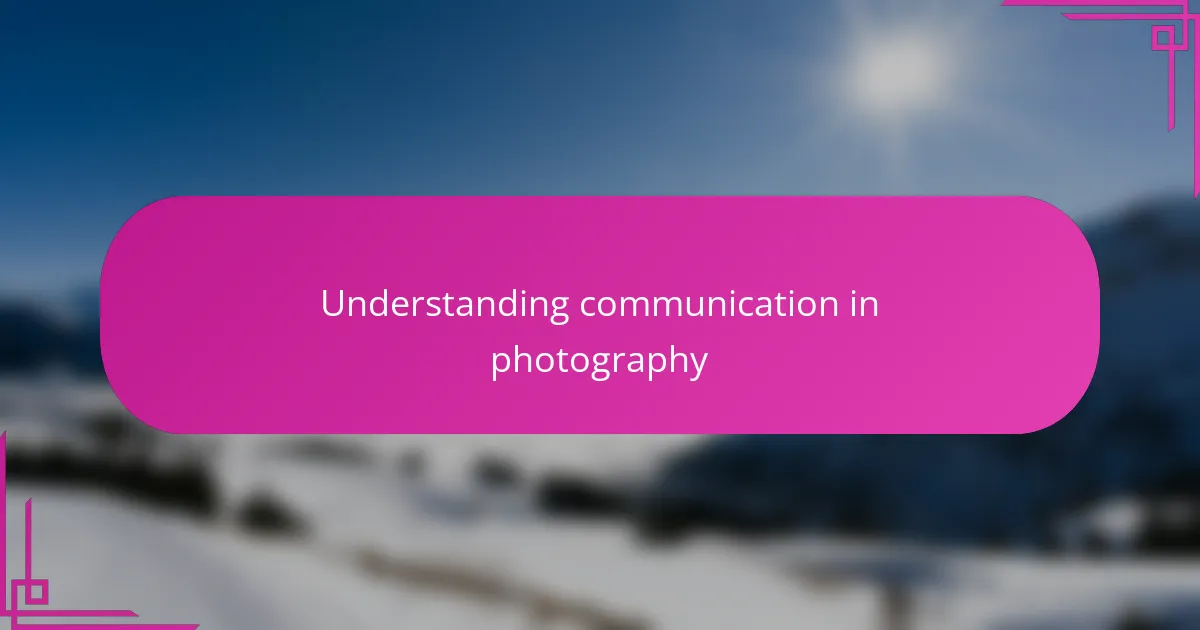
Understanding communication in photography
Communication in photography goes beyond words; it’s about sensing and responding to the energy of your subject. I’ve often found that a genuine smile or a quiet moment of eye contact can convey more than any instruction I give. Have you ever noticed how a relaxed subject always translates into a more natural shot?
When I first started, I underestimated the power of non-verbal cues. Over time, I realized that subtle gestures, changes in lighting, or even a nod can guide the flow of a shoot, almost like a conversation without speaking. It’s in those moments that the connection deepens and the true personality of the subject emerges.
What strikes me most is how communication shapes trust. Without it, even the best technical skills fall flat. When my subjects feel heard and comfortable, their authenticity shines through the lens—and that’s the heart of impactful photography.
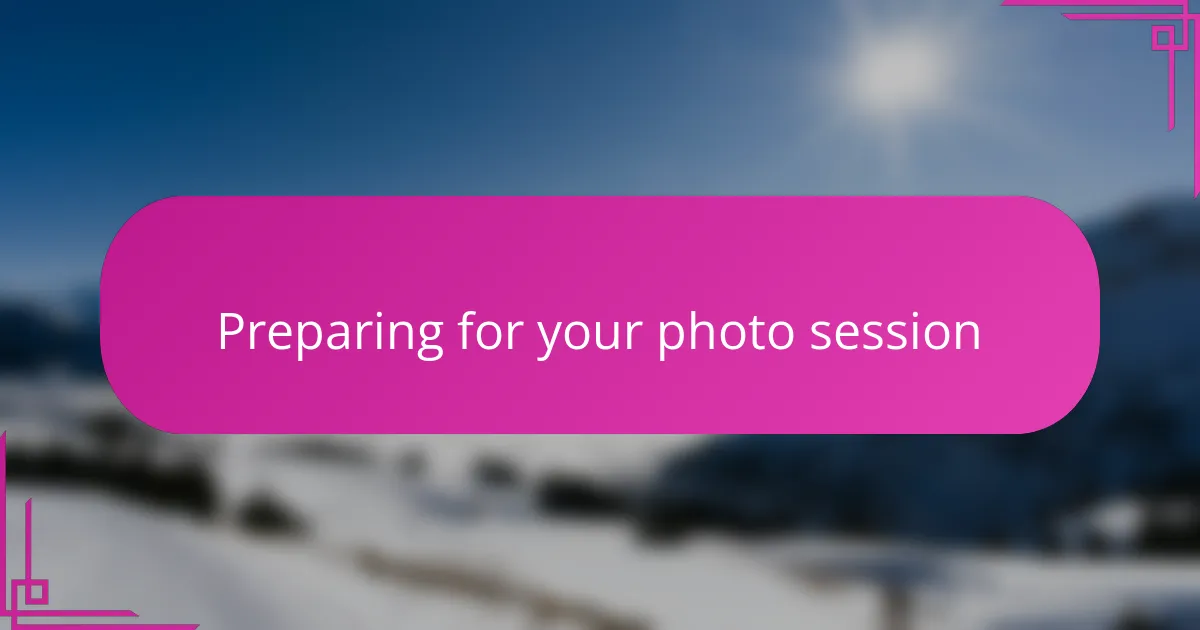
Preparing for your photo session
Preparing for your photo session means more than just packing your camera gear—it’s about setting the stage for communication to flow naturally. I always take time to learn about my subjects beforehand, whether it’s their interests, comfort zones, or even what makes them laugh. This helps me break the ice before the first click.
I remember a session where I showed up with a simple checklist of questions to ask, but soon found that just listening and adapting to the mood worked better. Have you ever felt that nervous energy just before a shoot? Preparing mentally to be patient and responsive makes all the difference in turning that tension into connection.
Sometimes, I also consider the environment as part of preparation. Choosing a location where the subject feels safe or inspired sets a subtle tone that influences the whole shoot. When the surroundings feel right, I notice how my subjects naturally open up, making my job feel less like work and more like a shared experience.
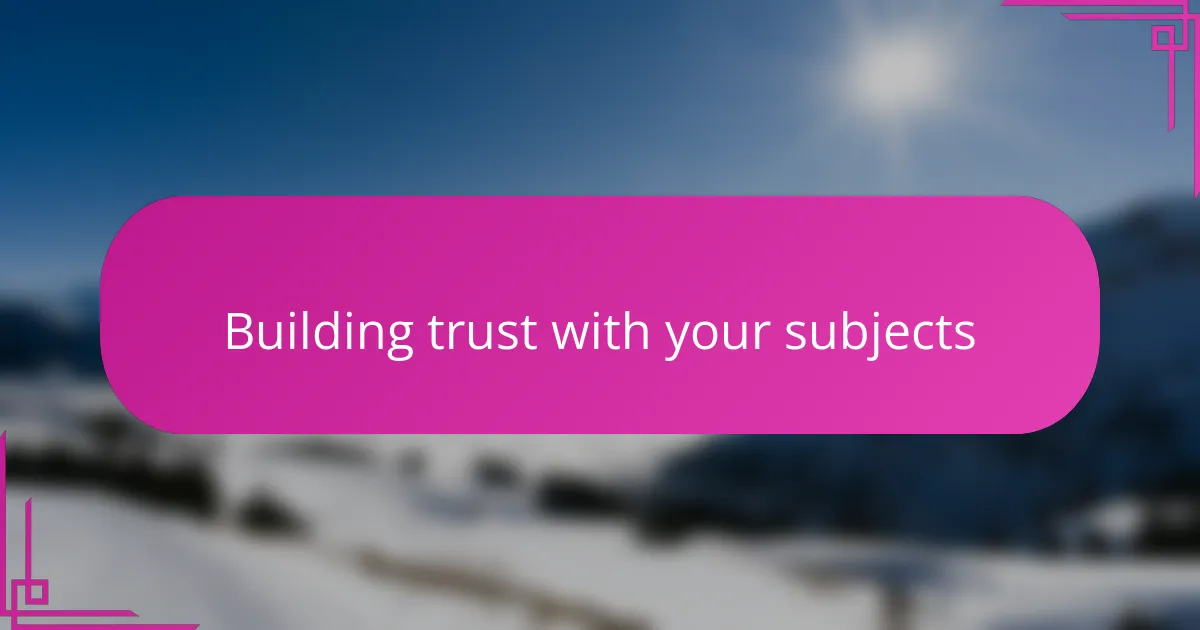
Building trust with your subjects
Trust is the foundation on which every great portrait is built. I recall one shoot where my subject seemed guarded at first, but as I shared a bit about myself and the story behind my photography, their posture softened. Have you ever noticed how revealing a personal anecdote can invite openness in return?
It’s not just about words; it’s the consistency between what you say and the energy you bring. When people sense you genuinely care, walls come down naturally. I find that small actions—a reassuring nod, patient silence, or a shared laugh—can speak louder than any reassurance I might offer verbally.
Building trust takes time, and sometimes that means sitting with silence rather than rushing into poses. I learned this the hard way when I tried to fill every moment with chatter, only to realize my subjects needed space to feel safe first. Isn’t it fascinating how giving someone that room can transform a stiff shoot into an authentic, heartfelt conversation through the lens?
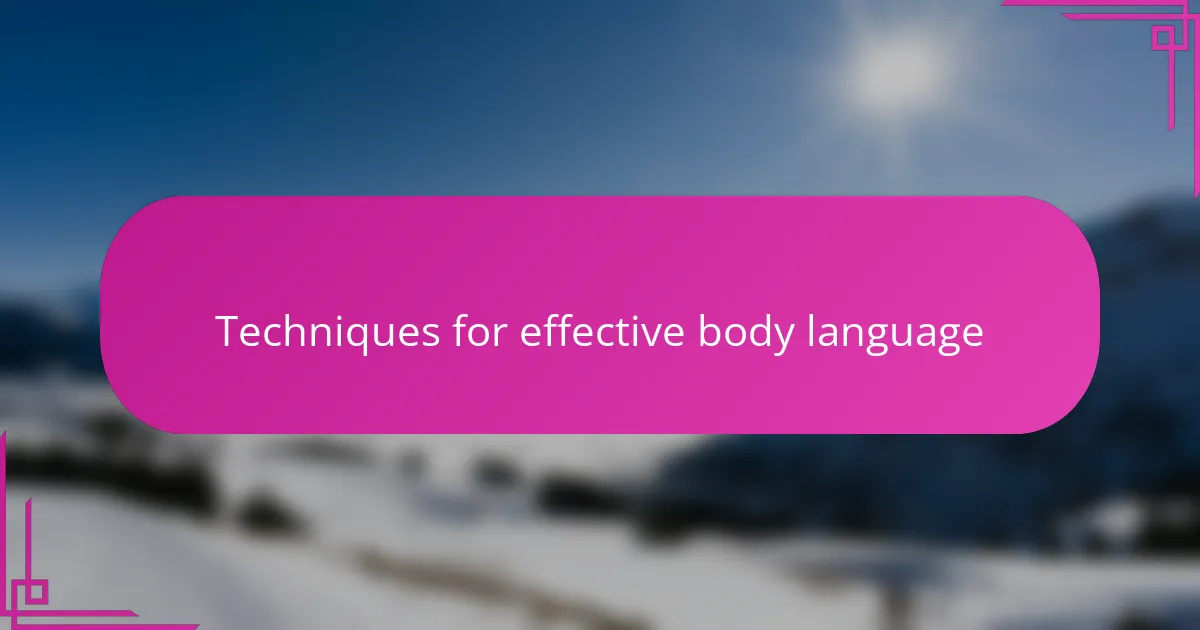
Techniques for effective body language
One technique I rely on is mirroring my subject’s body language subtly. When I notice them leaning in or relaxing their shoulders, I adjust my stance to match that energy. Have you tried this? It’s like sending a silent message that says, “I’m in sync with you,” which instantly helps subjects feel more at ease.
I also pay close attention to eye contact—not the intense stare, but gentle, steady engagement that shows I’m fully present. Once, during a chilly outdoor shoot, soft eye contact combined with a warm smile seemed to thaw the moment, helping my subject forget the cold and focus on being themselves. It’s incredible how just our eyes and expressions carry trust without words.
Lastly, I emphasize open body language—uncrossed arms, relaxed hands, and inviting postures. In one session, as soon as I showcased this openness, my subject mirrored it and started experimenting with poses more freely. Isn’t it fascinating how the simple way we hold ourselves can encourage someone else to open up both physically and emotionally?
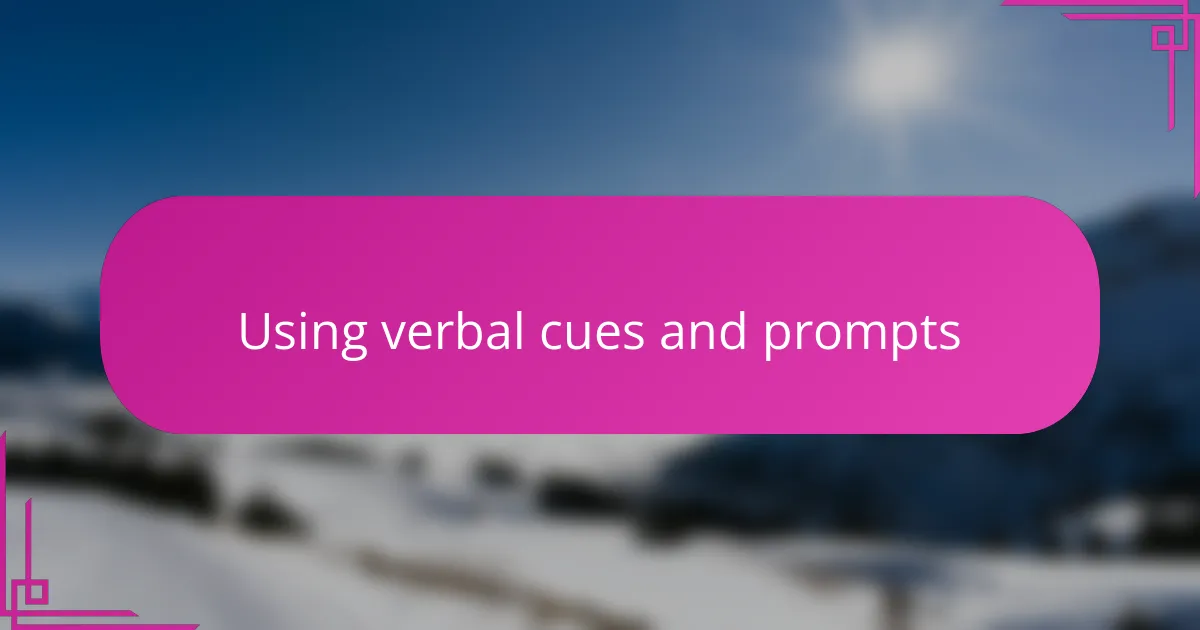
Using verbal cues and prompts
Using verbal cues and prompts has become one of my go-to tools for guiding a shoot without overwhelming my subjects. I often ask gentle, open-ended questions like, “How are you feeling right now?” or “Can you try looking that way?” These small nudges feel less like commands and more like invitations to express themselves, which often sparks unexpected, genuine moments.
Sometimes, the right prompt is just a simple word or phrase. In one session, I noticed my subject getting tense, so I softly said, “Breathe,” and suddenly their shoulders dropped, and the whole mood shifted. Have you ever experienced how a single, well-timed word can act like a reset button during a shoot? It’s a subtle but powerful way to keep the energy flowing.
I’ve learned that timing matters just as much as what I say. A quiet moment to let a subject process a prompt can bring out authentic expressions I might never have captured otherwise. It’s fascinating how a pause, followed by a gentle cue, can turn uncertainty into confidence, making the photo session feel less like posing and more like a natural conversation.
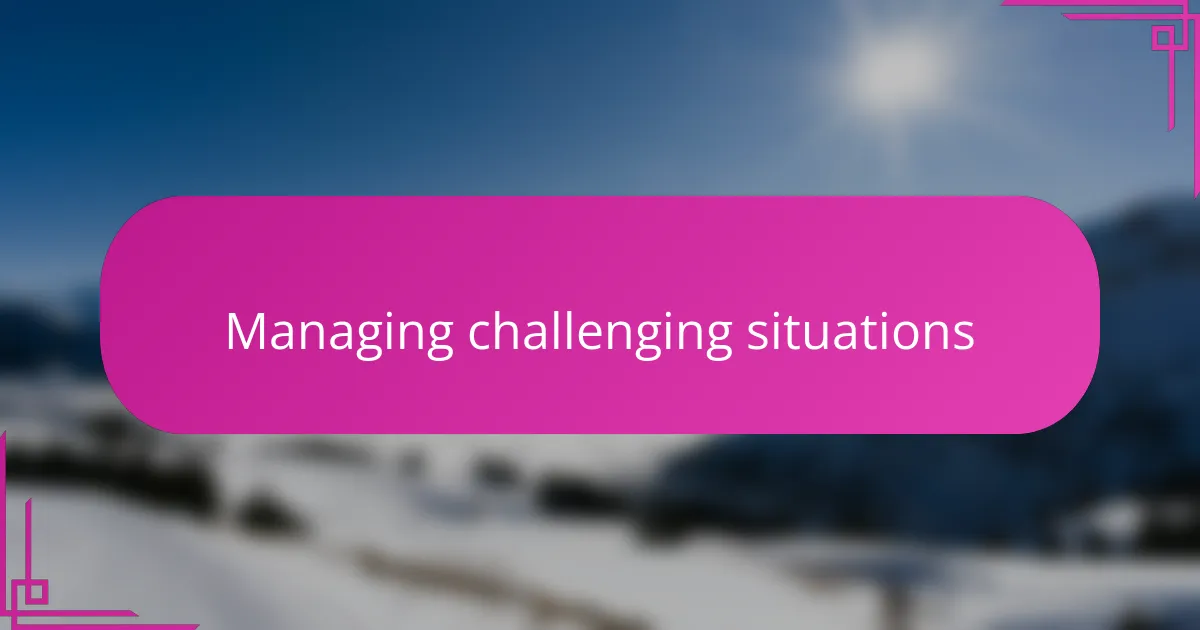
Managing challenging situations
Challenging situations often arise when my subjects feel uncomfortable or uncertain, and I’ve found that patience becomes my greatest ally. There was a session where the subject kept pulling away, literally shrinking from the camera; instead of pushing harder, I took a step back and simply offered quiet encouragement. Have you ever noticed how easing the pressure can sometimes unlock the most genuine emotions?
When tension builds, I try to acknowledge it openly, saying something like, “It’s okay to feel a bit awkward—this happens to everyone.” That simple honesty often breaks the ice and invites a sense of shared vulnerability. I remember one shoot where admitting my own nerves actually made my subject laugh, shifting the mood completely.
Sometimes, managing these moments means adapting on the fly—changing the setting, adjusting the lighting, or even taking a short break. In one particularly tough shoot, a quick walk outside helped reset both our energies and changed the dynamic for the better. Isn’t it interesting how a small change can turn frustration into flow?